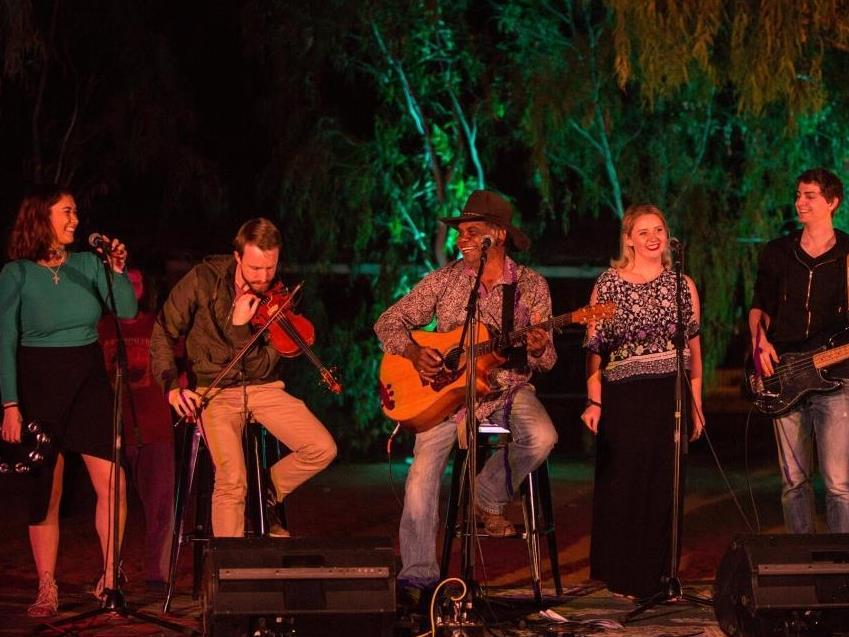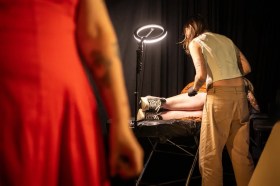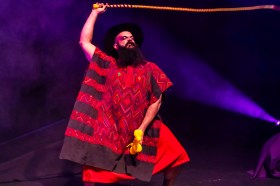Tertiary collaboration in the regions. Image: Oliver Eclipse, Barkly Regional Arts.
Collaborating with Regional Communities is a new free online publication launched by Regional Arts Australia that covers eight key considerations that can be used as a checklist for good practice when planning to work on a collaborative cultural project in regional or remote Australia.
‘The publication has tips, practical information and case studies to help create more meaningful collaboration and engagement in regional communities,’ said Esther Gyorki, the communications manager at Regional Arts Australia.
Intended for artists, arts organisations, community groups, venues, local government bodies, touring arts organisations and individuals, the publication offers effective ways to build strong relationships in regional communities, especially with First Nations people.
‘It’s important to take the time to learn about and understand First Nations culture and whose Country you are on.’ Gyorki said.
Building strong relationships in regional communities
Rather than putting on a show in a regional community and then leaving the next day, Gyorki suggests spending time getting to know locals, perhaps by talking to local community members or putting on workshops, masterclasses or even a Q&A before or after the show to increase engagement with the community.
‘It’s much more beneficial for both the artist or organisations going into the community and the community themselves if you actually take time to stop, build a relationship and actually talk to people and engage rather than just go in and out straight away,’ she said.
But it’s building and nurturing relationships that is one of the most important areas when it comes to successfully collaborating with regional communities. A case study listed in the publication outlines the positive relationship fostered between Opera Australia and Barkly Regional Arts, which operates in the NT.
Barkly Regional Arts former artistic director Kathy Burns said, ‘The best relationships are formed when a touring company’s vision extends beyond dollars.
‘When you come to the Territory, it’s not about the box office. So you can’t see that as a reason to say “we’ll go there and we’ll make more money” because we don’t have the community that is going to give you that box office. So you have to come for a very different reason.’
One of the other key areas covered in the publication is the importance of working with different businesses, organisations and groups, and the individuals behind them — many of whom are volunteers. And it’s understanding their important role in assisting with events that can lead to a great collaboration.
‘Universally with the arts, volunteers are often a really fundamental part of making a project successful, so it’s important to respect them and treat them well because they are so vital to the success of these programs,’ Gyorki said.
Launched earlier this month, Gyorki said she hopes Collaborating with Regional Communities will benefit the wider arts community in their relationships with regional communities.
‘We hope that this is a timeless document that will be able to be used by a really diverse range of artists and arts organisations to support more meaningful engagement nationally.’
To learn more about the publication, Collaborating with Regional Communities, visit: Regional Arts Australia





